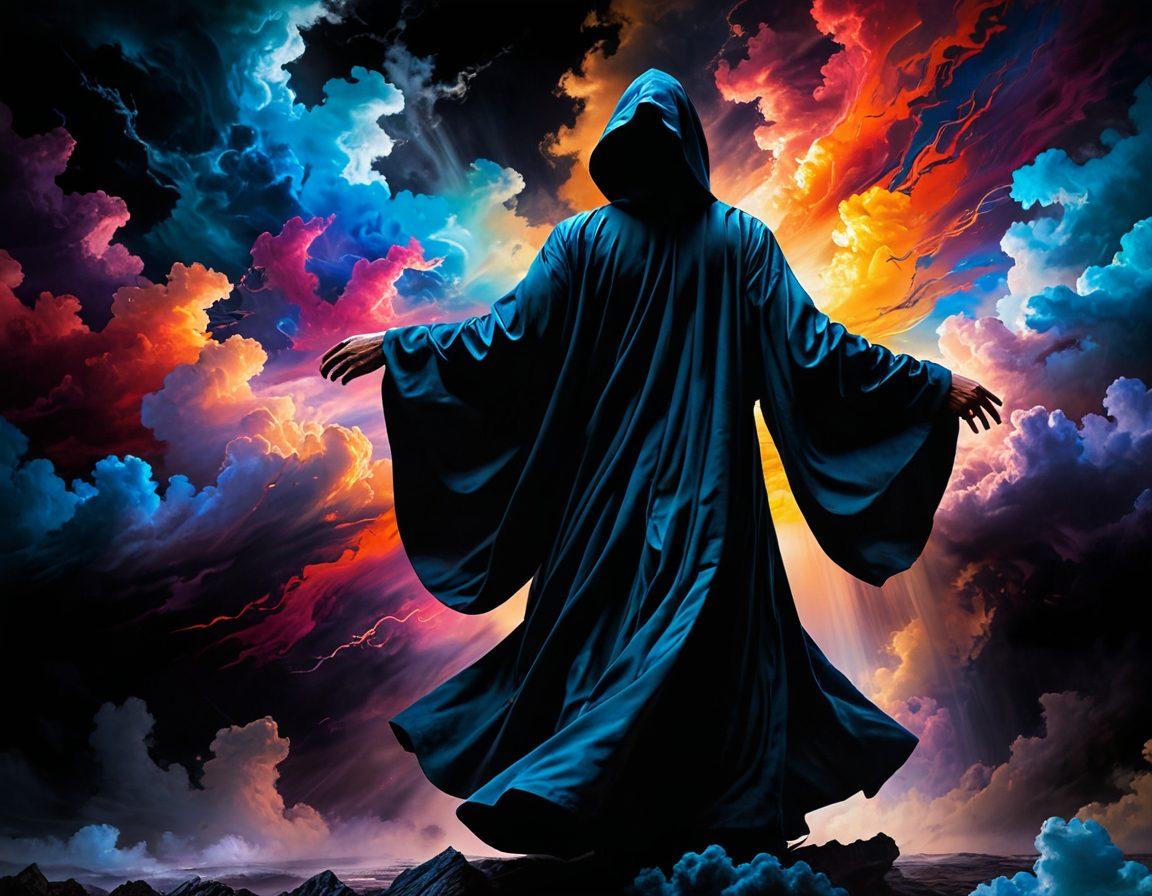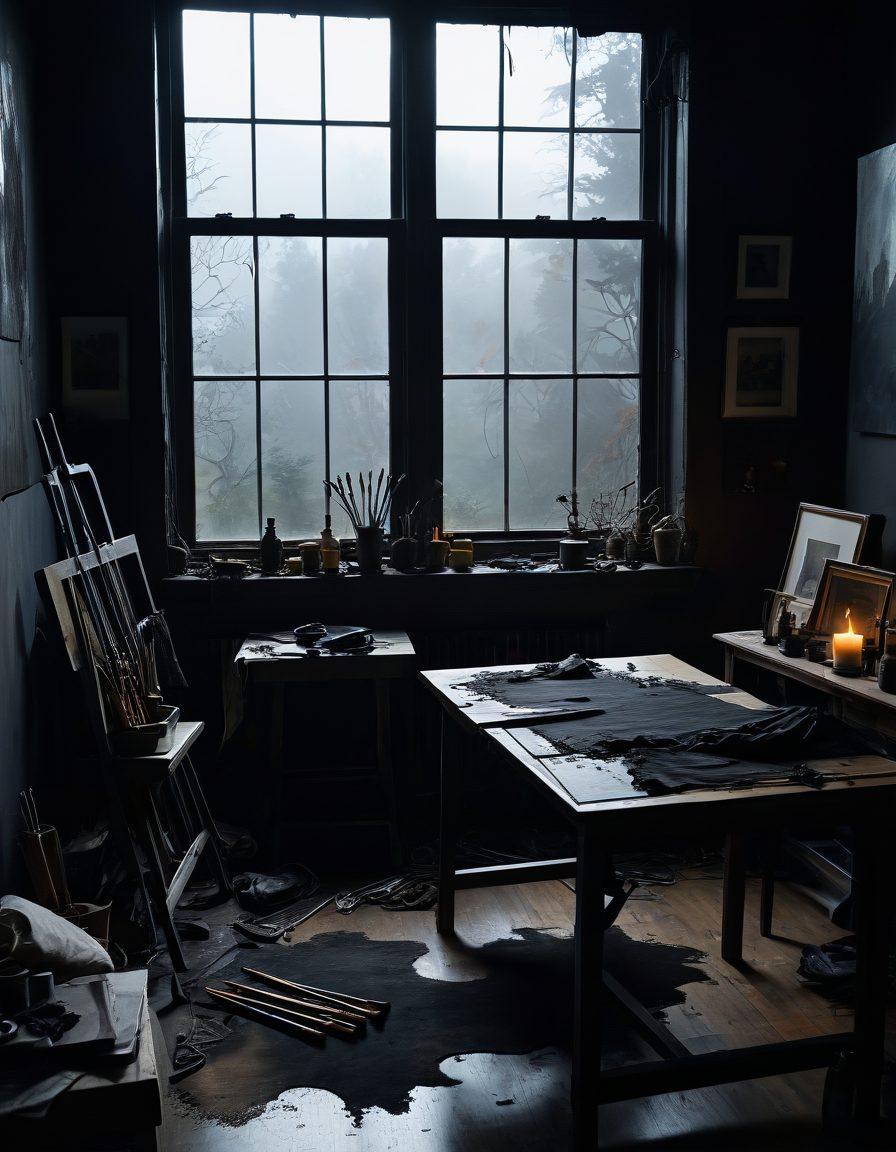Exploring the Depths: How Torturous Art Reflects Emotional Turmoil and Creative Sorrow
Art is often seen as a medium of beauty, joy, and inspiration, but what if we were to explore its darker side? Welcome to the world of torturous art, where the complexity of human emotions unfolds—a tapestry woven with threads of grief, sorrow, and artistic pain. At this intersection of creativity and turmoil lies a profound truth: that sometimes, pain can lead to some of the most powerful and haunting expressions of emotion. Have you ever wondered how the struggles and tragedies of life manifest in the artistic realm?
Torturous art invites us to confront the uncomfortable emotions we often seek to avoid. Whether it’s a painting drenched in melancholy or a sculpture that reflects profound grief, these expressions capture the essence of the human experience. Just think of Edvard Munch's 'The Scream'—a depiction of existential angst that resonates with anyone who has felt overwhelmed by sorrow. It's in these moments of darkness that we can find a reflection of our own emotional turmoil. Is it possible that art serves as a mirror for the soul, allowing us to confront our fears and vulnerabilities through the lens of others’ pain?
Imagine walking into a gallery filled with gloomy art, each piece telling the story of heartbreak and trauma. You may come across works that depict chilling scenes of loss or visceral representations of despair, yet there's an undeniable gripping beauty in how they invite us to empathize with the human condition. It’s in these instances that artistic melancholy reigns supreme—a reminder that every artist has woven their own painful expression into their creations. Are we not all artists in our own right, painting our narratives with the colors of our experiences?
Deep down, there’s an undeniable allure to what we refer to as distressing art. This ‘dark creativity’ acts as a bridge that connects artists and viewers through shared experiences of sadness. By channeling feelings of sadness and grief into their works, artists can offer a moment of catharsis—not just for themselves but for their audience, too. The transformative power of expressive art lies in its ability to foster healing. Can we, too, learn to embrace our grief as a vital part of our narratives rather than something to suppress?
While some may resist the notion of torturous art as a form of therapy, the reality is that for many, artistic expression becomes a vital coping mechanism. It allows the release of feelings that often feel too heavy to bear. Whether it’s through creating macabre art or observing distressing depictions of pain, the process can guide us toward understanding and integrating our emotions. As we delve into the beauty of pain, we start to uncover the lessons inherent in our own suffering. What if we recognized that our darkest moments could actually illuminate the path to our healing journey?
From Darkness to Light: How Artistic Melancholy Transforms Grief into Profound Expression
In a world filled with vibrant hues and joyous expressions, there exists a contrasting realm of art that often delves into the shadows of human experience. This type of art, commonly referred to as 'torturous art,' is born from deep emotional turmoil and creative sorrow. Have you ever wondered why some artists choose to express their grief, sorrow, and trauma through such macabre or gloomy art? Perhaps it’s because in the darkest corners of our psyche, artistic pain can find its most profound voice. From darkness to light, the journey through artistic melancholy transforms our most agonizing experiences into something beautifully expressive.
Consider the famed artist Edvard Munch who beautifully encapsulated the agony of human existence through his iconic piece, 'The Scream.' This artwork is a haunting yet relatable representation of the emotional landscape many navigate. Munch’s sorrowful expression reflects a sentiment echoed by many artists—the struggle to communicate feelings that seem inexplicable. This kind of melancholic art allows creators and viewers alike to connect on a deeply emotional level, turning painful expression into a shared experience of vulnerability. As Munch once said, 'I do not believe in the art which is not the mad result of man's soul.' How do you find solace in the depictions of pain and sorrow?
Art has long served as a therapeutic outlet, guiding individuals to process grief and emotional turmoil. Works characterized by dark creativity often become a mirror of one’s internal battle, allowing both the artist and the audience to confront and contemplate their distressing emotions. This is the essence of art as therapy. Through the lens of creative sorrow, we witness the beauty that arises from trauma, as artistic melancholy births expressive art that resonates deeply within the human heart. When you look at a piece of art that portrays sadness, do you feel connected to a shared narrative of suffering? Can art provide a roadmap through your own emotional labyrinth?
Furthermore, the journey from darkness to light is essential in understanding how sadness in art can inspire healing. Every brush stroke, every chiseled edge can tell a story of transformation; the act of creating can be a cathartic release. This process unveils the artist’s narrative and allows observers to find meaning and hope amidst grief, often encouraging them to embrace their own emotional struggles. It's as if the artist whispers, 'You are not alone in your sadness.' How does the recognition of shared sorrow foster a sense of community among those who encounter such poignant works?
In conclusion, while torturous art may appear bleak at first glance, it is ultimately an exploration of resilience. The evolution from adversity to creative expression reveals the power of dark emotionality and encourages a collective healing. Each piece invites us to confront our fears and validate our pain, culminating in an extraordinary depiction of the human condition. This dynamic interplay between grief and artistry serves as a reminder that while we may navigate the depths of sorrow, we can also emerge into the light of understanding and connection. Next time you encounter a piece of melancholic art, take a moment to appreciate the journey it represents—not just for the artist, but for all of us striving to transform our grief into profound expression.
The Haunting Canvas: Exploring the Dark Emotionality Behind Gloomy and Distressing Artworks
Art has always been a mirror reflecting the diversity of human experience, with one of its most profound facets being the exploration of emotional turmoil. The genre of torturous art serves as a poignant canvas for creators striving to articulate their deepest fears, sorrows, and grief. Scenes painted in shadows, figures draped in despair, and colors drenched in melancholy invite us to delve into the haunting emotionality behind gloomy and distressing artworks. This powerful relationship between the artist’s inner struggles and their expressions on the canvas prompts us to ask: How does creative sorrow translate into artistic pain?
As viewers, we are frequently captivated by macabre art and its ability to convey visceral feelings. The canvas becomes more than just a surface; it morphs into a space where the audience can engage with the artist’s emotional landscape. But why do we find ourselves drawn to such painful expressions of existence? Perhaps it reassures us that we are not alone in our grief, that feelings of sadness and suffering are universal truths woven into the fabric of life. Artwork featuring depictions of pain can evoke memories of our own trauma, navigating us through our darkest moments, reminding us that there is beauty in darkness—a fascinating dichotomy, wouldn’t you agree?
The essence of gloomy art lies in its capacity to channel our collective sorrow. Through expressive art, we often find catharsis; it allows us both an escape and a confrontation with our emotions. Take, for instance, the work of renowned artists such as Edvard Munch or Francisco Goya. Their paintings depict raw emotional turmoil, acting as a portal into the depths of despair yet presenting an opportunity for healing through understanding. With every brushstroke that reveals artistic melancholy, they invite us to explore our own depths, urging us to reflect on our own experiences with sadness and loss.
Dark creativity often intertwines personal narratives with broader social commentaries. Torturous art is not merely about reflecting an individual’s personal struggles; it also serves as a response to the trauma and the emotional turmoil faced by society. Think about the art during oppressive regimes, where creative sorrow became a means of protest. How does the understanding of such artistic movements reshape our understanding of pain in art? The sorrow that envelops somber artworks often prompts dialogue surrounding mental health and the importance of art as therapy. It raises significant questions about how we view creativity and the potential of art to provide comfort—or to serve as a conduit for profound societal critique.
In conclusion, the haunting canvas of dark emotionality in art compels us to confront our emotions. It serves as a reminder that sadness in art—much like grief—is not to be feared but embraced. Let us cherish the vibrant, rich expressions of sorrow that engage both our hearts and minds. As we explore the depths of artistic melancholy, we must ask ourselves: How can we use these emotional revelations to inspire our personal journeys? Through understanding the narratives behind these poignant pieces, we may find not just solace but also a means to foster creativity and resilience in our own lives. Let the art guide you through your emotional experiences, and perhaps you’ll discover a path to healing and newfound insight within yourself.


